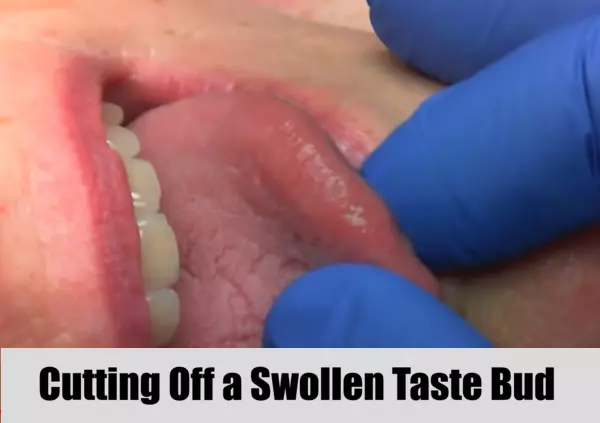Swollen taste buds, also called inflamed papillae, can occur for many reasons, including eating hot, spicy, or cold foods. They can also be caused by conditions like allergies, dry mouth, and even stress. While they aren’t serious, swollen taste buds can be uncomfortable and may affect a person’s ability to eat or drink. Fortunately, they usually heal on their own in a few days.
Swollen taste buds can be caused by a range of risk factors, including smoking, poor oral hygiene, and dry mouth. Additionally, using dental appliances or tobacco products can also exacerbate the problem. Occasionally, swollen taste buds may be a sign of an underlying condition like acid reflux, dry mouth, or allergies.
Symptoms of inflamed taste buds can include pain, sensitivity, and discomfort when eating or drinking. People may experience one or several swollen taste buds. Less commonly, swollen taste buds may indicate a more serious ailment. Regardless, it is important to practice good oral hygiene and visit a healthcare provider if the problem persists for more than two weeks.
Here’s what you can expect if you need to have a swollen taste bud cut off:
- First, you should make an appointment with your doctor or an ear, nose, and throat specialist to discuss your options and determine if cutting off the swollen taste bud is the best course of action for you. This is also a good time to ask any questions you may have and address any concerns.
- On the day of the procedure, you will likely be given a local anesthetic to numb the area around the swollen taste bud. This will help to minimize any pain or discomfort during the procedure.
- Once the area is numb, the doctor will use a small scalpel to carefully remove the swollen taste bud. This is a quick and relatively simple procedure that typically takes only a few minutes to complete.
- After the swollen taste bud has been removed, your doctor may use a small amount of medication or a special rinse to help reduce any swelling and promote healing of the area.
- You will likely be able to go home shortly after the procedure, and will be advised to avoid hot, spicy, or acidic foods for a few days to give the area time to heal.
- It’s important to follow your doctor’s instructions for caring for the area after the procedure, including any medications or rinses that may be prescribed. If you experience any unusual swelling, pain, or other symptoms, be sure to contact your doctor right away.
- While cutting off a swollen taste bud may sound intimidating, it is generally a safe and effective procedure that can provide relief and improve your overall quality of life. If you are experiencing discomfort or irritation due to a swollen taste bud, talk to your doctor to learn more about your treatment options.
After cutting off a swollen taste bud, it is common to experience some discomfort and mild pain. This is because the area is still healing and needs time to recover. In the first few hours after the procedure, it is normal to have some bleeding and swelling. Ice can be used to help reduce the swelling. It is also important to avoid hot or spicy foods, which can irritate the area and cause more pain. Over-the-counter pain relief medication can also be taken to help manage the discomfort.
In the first few days after cutting off a swollen taste bud, it is important to keep the area clean and avoid irritating it. This can be done by rinsing the mouth with warm saltwater and gently brushing the area with a soft toothbrush. It is also important to continue to avoid hot or spicy foods. Swollen taste buds usually take a few days to fully heal, but if the pain and discomfort persist or worsen, it is important to seek medical attention.
About the Author
Reyus Mammadli is the author of this health blog since 2008. With a background in medical and biotechnical devices, he has over 15 years of experience working with medical literature and expert guidelines from WHO, CDC, Mayo Clinic, and others. His goal is to present clear, accurate health information for everyday readers — not as a substitute for medical advice.






